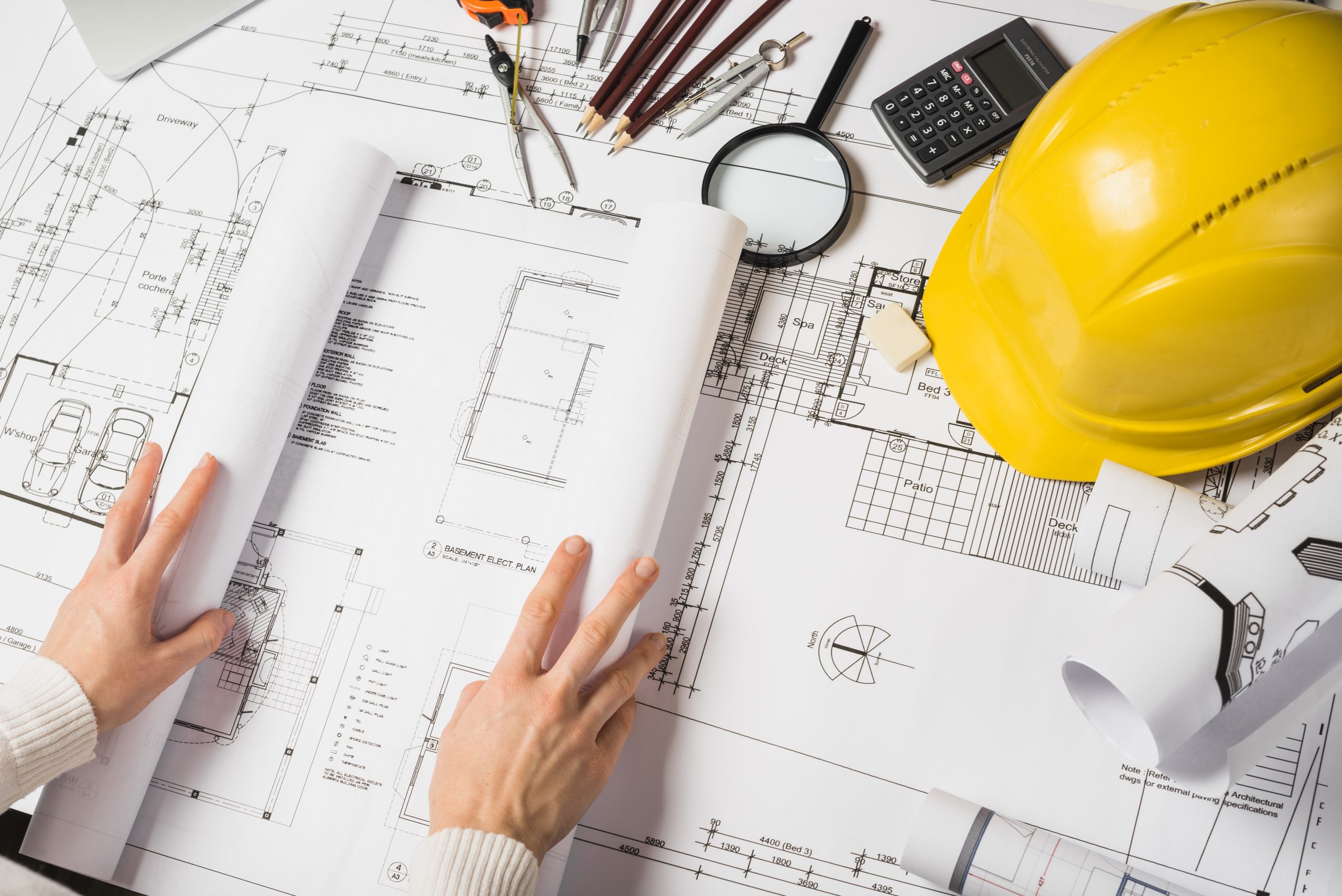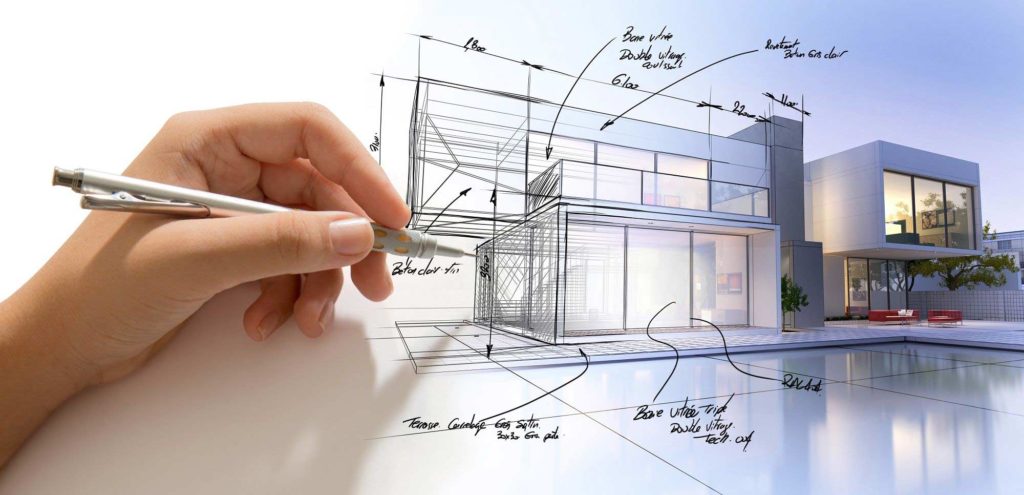Understanding the Diverse Profession Paths Available for Aspiring Architect
As a hopeful Architect, you have a world of occupation courses waiting for you. Whether you're attracted to traditional style or the nuances of lasting design, there's a particular niche that lines up with your rate of interests.
Standard Design: Creating Buildings and Frameworks
Standard architecture concentrates on designing structures and structures that blend functionality with visual charm. As you discover this area, you'll appreciate the intricate balance in between kind and purpose. You'll find out to draw ideas from historic styles, incorporating aspects like balance, products, and workmanship. Your layouts can reflect social heritage, showcasing regional practices while fulfilling contemporary demands.
You'll develop abilities in preparing, model-making, and website evaluation, permitting you to picture and communicate your concepts successfully. Engaging with clients, you'll need to comprehend their vision and equate it right into practical designs.
Furthermore, building codes and sustainability techniques are essential in your work, ensuring your structures are safe and eco-friendly. As you expand in your profession, you'll find chances in domestic, commercial, or also repair projects, each offering special difficulties. Accepting conventional architecture leads the method for a satisfying profession that admires the past while forming the future.
Urban Planning: Forming Neighborhoods and Public Spaces
As a hopeful Architect, you can play an essential function as an urban planner, transforming just how neighborhoods work and engage. By utilizing area engagement approaches, you'll ensure that residents have a voice in forming their environment. Plus, incorporating sustainable layout principles will certainly aid produce spaces that not just satisfy today's needs yet also secure the future.
Role of Urban Planners
While numerous may think of designers as the sole visionaries behind buildings, urban organizers play a necessary function in shaping the broader landscape of neighborhoods and public spaces. By working together with different stakeholders, you'll help design parks, transportation systems, and residential locations that advertise social interaction and access. Your expertise in spatial design and community characteristics enables you to envision future growth while maintaining social heritage.
Neighborhood Engagement Methods
Reliable neighborhood engagement approaches are crucial for urban planners to assure that the voices of citizens are heard and valued in the preparation procedure. To cultivate significant dialogue, you must prioritize open online forums and workshops where neighborhood participants can reveal their ideas and problems. Usage surveys and social media to get to a broader target market, making sure varied viewpoints are included. Working together with local organizations can enhance count on and help with much deeper connections. It's important to supply clear information concerning proposed jobs and decision-making processes, enabling residents to feel educated and encouraged. By actively integrating and paying attention comments, you'll develop spaces that show the area's demands, ultimately causing more successful and sustainable city settings. Embrace openness and continuous dialogue for long-term impact.
Sustainable Design Principles
When designing urban rooms, including lasting design concepts is essential for creating settings that flourish both ecologically and socially. Take into consideration incorporating environment-friendly areas, like yards and parks, to improve biodiversity and improve air quality.
Creating with water conservation in mind is additionally crucial-- think of rainfall gardens and absorptive surfaces to take care of stormwater. Entailing community participants during the preparation process warranties that the spaces you create fulfill their demands and encourage social interaction. By embracing these principles, you'll add to vibrant, lasting metropolitan landscapes that profit everybody.

Landscape Design: Creating Sustainable Outdoor Environments
As you discover landscape design, you'll uncover important style principles that develop lovely and functional exterior areas. Sustainable methods play an important role in making sure these settings thrive while reducing environmental influence. Plus, you'll locate a range of profession opportunities that allow you to make a real difference in exactly how people connect with nature.
Style Concepts in Landscape
Recognizing style principles in landscape architecture is necessary for developing lasting outside settings that harmonize with nature. You'll require to ponder elements like percentage, equilibrium, and range to guarantee your layouts really feel cohesive and welcoming. Including indigenous plants not just improves biodiversity however also lowers water usage, making your landscape durable. Think of the flow of room and exactly how individuals engage with it; pathways and seating areas must welcome exploration and leisure. Furthermore, take notice of seasonal changes, creating with products that enhance the environments year-round (Architect). By focusing on sustainability and aesthetic appeals, you can create outdoor areas that enrich the neighborhood and promote well-being. Embracing these concepts will certainly set a strong foundation for your job in landscape architecture.
Lasting Practices Summary
Sustainable methods in landscape style not only focus on visual appeals however also focus on environmental wellness and source conservation. You can develop rooms that promote soil health, such as making use of organic materials and practicing permaculture principles. Eventually, these methods assure your designs profit both individuals and the environment for years to come.
Profession Opportunities Exploration
With a solid foundation in lasting techniques, landscape architecture provides a range of occupation paths that allow you to make a significant influence on the environment. You could work as a landscape developer, creating aesthetically pleasing and functional outdoor spaces, or concentrate on ecological remediation, assisting to restore damaged environments. Urban planners commonly team up with landscape engineers to produce eco-friendly areas in metropolitan settings, enhancing city livability. If you're passionate regarding education, take into consideration becoming a landscape design instructor, motivating future generations. In addition, you could deal with nonprofits concentrated on ecological sustainability or participate in research to innovate new methods. Each path not only forms beautiful settings however additionally promotes a healthier planet for future generations.
Lasting Layout: Concentrating on Eco-Friendly Practices
As you explore your job in design, embracing eco-friendly practices can establish you apart in a competitive area. Lasting design concentrates on developing buildings that lessen environmental effect while enhancing occupant well-being. By incorporating eco-friendly materials, energy-efficient systems, and sustainable structure strategies, you'll contribute to a greener future.
Begin by obtaining understanding of environment-friendly qualifications like LEED or BREEAM, which can boost your qualifications. Think about exactly how all-natural light, ventilation, and thermal efficiency can maximize style. Collaborate with engineers and ecological experts to innovate services that Extra resources lower waste and conserve resources.
Don't forget the relevance of community involvement-- appealing regional stakeholders can motivate layouts that integrate with the atmosphere. As clients increasingly prioritize sustainability, your proficiency in environmentally friendly methods will certainly not just bring in tasks yet also fulfill your enthusiasm for accountable design. Embrace this crucial element of the occupation, and view your profession prosper.
Historic Conservation: Shielding and Bring Back Cultural Heritage
While you commence on your building journey, think about the official site necessary function of historical preservation in keeping our social heritage. This area concentrates on the defense and reconstruction of significant structures, websites, and frameworks that tell the stories of our past. By involving in historical conservation, you'll aid guard the building tradition that shapes community identification.
As a historical preservation Architect, you'll assess historical importance and evaluate the condition of frameworks. You'll function closely with guardians and chroniclers to assure genuine restoration techniques are used. This profession path permits you to mix creativity with study, enabling you to make options that appreciate initial products and craftsmanship.
Your work not just adds to sustainability by reusing existing buildings yet likewise cultivates a feeling of pride within areas. Accepting this path will assist you come to be a guardian of background, protecting the tales and aesthetic appeals that enhance our lives.
Inside Design: Enhancing Indoor Spaces
Historical preservation and indoor architecture both share a commitment to boosting the built environment, but they concentrate on various facets. While historical conservation highlights keeping a structure's historical and social value, interior design zeroes in on optimizing indoor rooms for functionality and aesthetics.
As a hopeful Architect, you'll locate that interior design permits you to mix imagination with technical abilities. You'll design rooms that not only look great but likewise advertise comfort and performance. This field entails comprehending exactly how light, shade, and products engage within a room, influencing state of mind and usability.
You'll deal with different tasks, from residential homes to commercial offices, guaranteeing that each atmosphere satisfies the requirements of its owners. By focusing on customer experience, you can change insides right into useful and motivating areas, making a substantial influence on just how individuals connect with their environments. Accept the chance to improve indoor settings and form the method people live and work.
Industrial Style: Combining Capability With Aesthetic Appeals
Industrial design plays an important role in developing items that effortlessly blend looks with performance, making sure that what you make use of everyday is not only visually appealing but also sensible. As a hopeful Architect, you can engage yourself in this area, concentrating on developing everything from furnishings to customer electronic devices. Your work includes comprehending user demands, products, and manufacturing processes, allowing you to produce innovative remedies that improve everyday experiences.
In industrial style, you'll commonly team up with designers, suppliers, and marketers, ensuring that your designs are not only attractive yet additionally viable. This job course supplies a vibrant atmosphere where imagination meets practicality, making it a gratifying option for architects interested in forming the items of tomorrow.
Often Asked Questions
What Educational Qualifications Do I Need to Become an Engineer?
To end up being a designer, you'll need a specialist degree in architecture, typically a Bachelor's or Master's. In addition, you'll need to complete a teaching fellowship and pass the Architect Registration Exam to exercise legally.
Exist Accreditation Requirements for Various Building Profession Paths?
Yes, there're qualification demands for various site link building paths. Architect. You'll need to pass tests, total internships, and sometimes seek specialized training, depending upon your selected focus, like landscape style, urban layout, or historic preservation
What Software Program Skills Are Important for Architects Today?

How Can I Gain Practical Experience While Examining Architecture?
You can acquire sensible experience by interning at building firms, taking part in layout competitors, offering for area projects, or teaming up with classmates on real-world jobs. These possibilities improve your skills and construct important links in the market.
What Work Opportunities Exist Outside Typical Design Firms?
You can discover different work opportunities outside traditional design firms, like metropolitan preparation, interior decoration, landscape architecture, building and construction administration, realty advancement, and even roles in sustainability consulting. Each deals one-of-a-kind difficulties and rewards.
Whether you're drawn to standard architecture or the nuances of lasting layout, there's a specific niche that straightens with your interests.When creating city spaces, integrating lasting style principles is crucial for developing environments that prosper both environmentally and socially.As you explore landscape architecture, you'll find crucial layout principles that produce attractive and functional exterior rooms.Comprehending layout concepts in landscape design is vital for producing lasting exterior environments that balance with nature.In industrial design, you'll commonly team up with makers, marketing professionals, and engineers, making sure that your styles are not only beautiful but additionally viable.